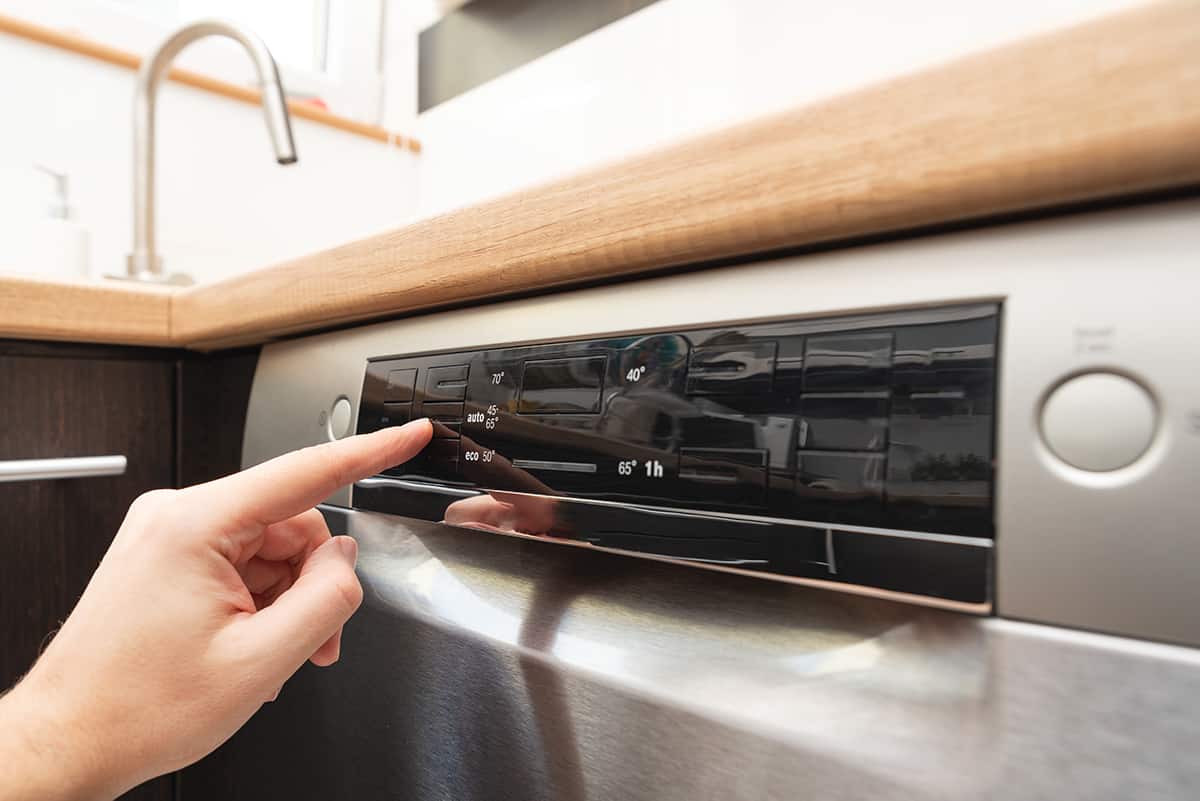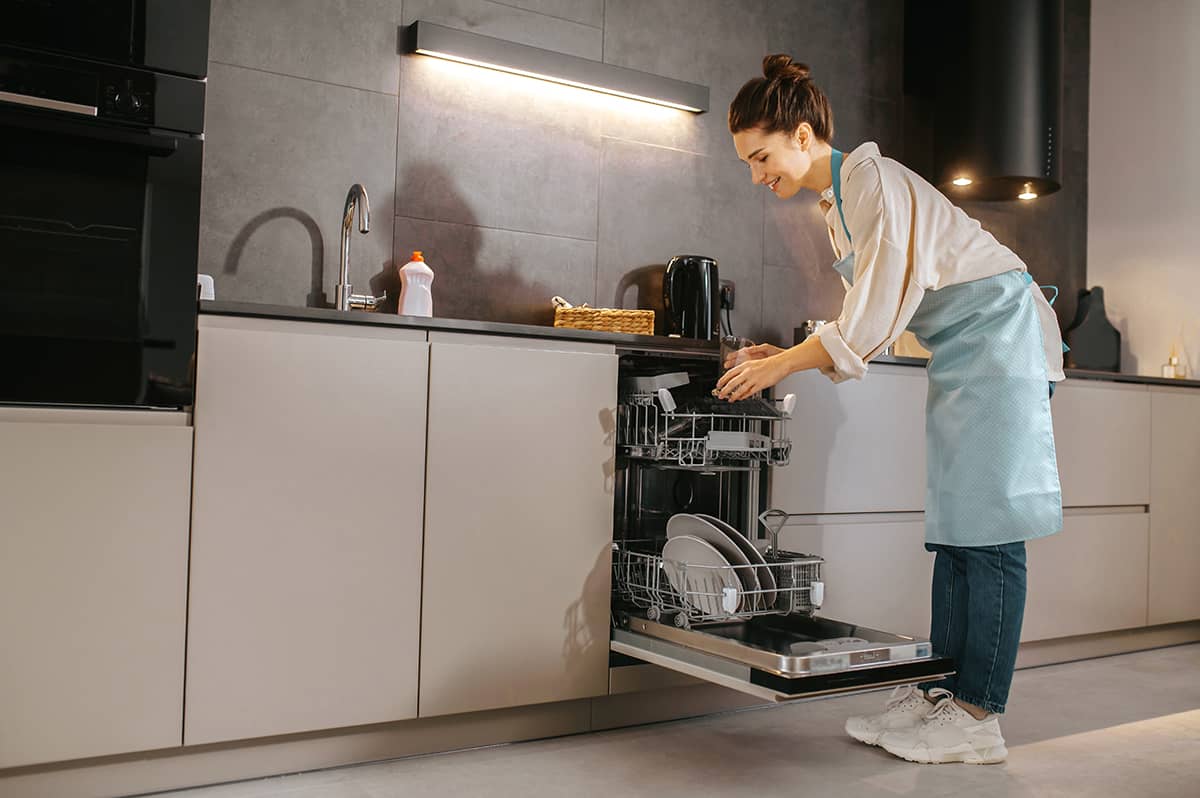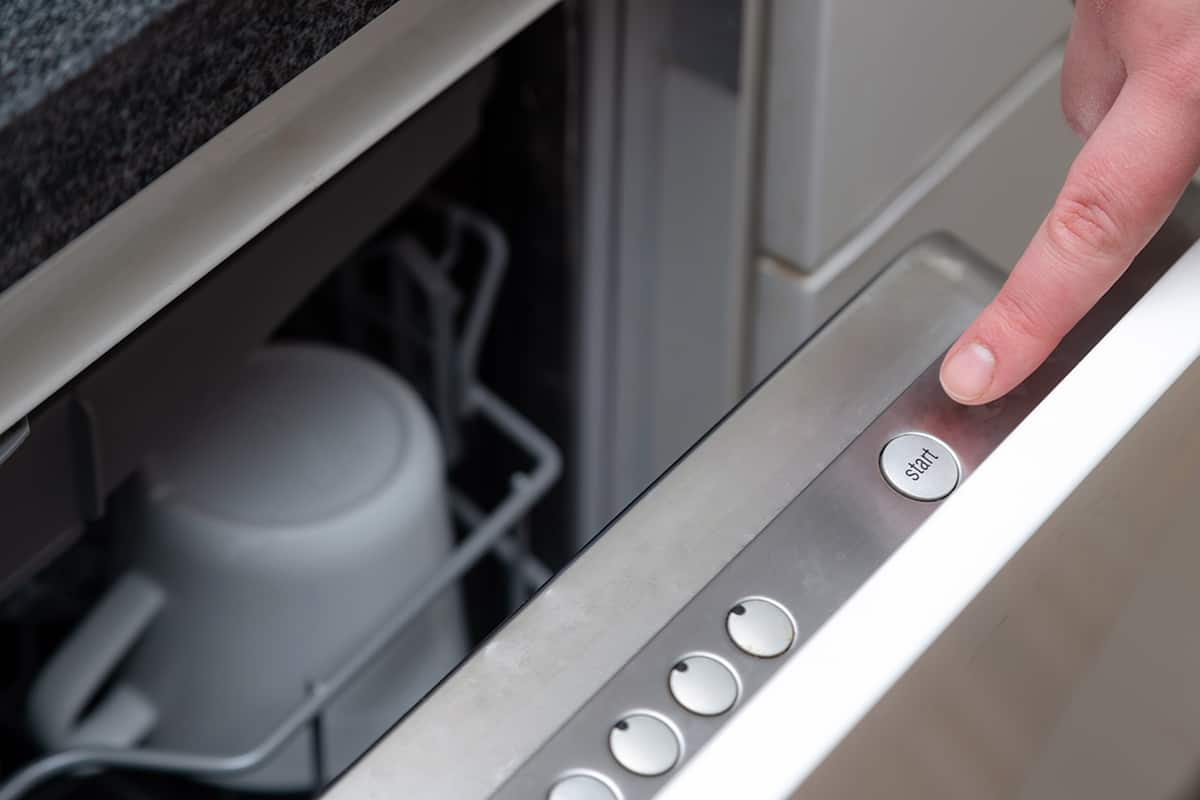One of the most frustrating things is finding your GE dishwasher on the fritz after hosting a large dinner party. The last thing anyone wants is to wash a mountain of dishes by hand or get down on their knees to fix some mysteriously damaged components in their dishwasher. Luckily, there’s a quick trick you can try that will almost always fix any technical problem in your GE dishwasher—resetting it.
You can reset most GE dishwashers by doing one of the following:
- Unplugging the dishwasher for 5 minutes before plugging it back in
- Pressing and holding the start/reset button for at least 10 seconds
- Pressing the reset button behind the kickplate
- Activating service mode
Below, I’ll explain why you might need to reset your GE dishwasher and the various ways of resetting a GE dishwasher.
Why You Might Have to Reset Your GE Dishwasher
Modern dishwashers are highly durable appliances that can, for the most part, withstand all sorts of turbulence, almost literally. However, there might come a time when you find your dishwasher doesn’t comply to simple demands. There could be several reasons for this, the most prominent of which are as follows:
Power loss
If you experienced a loss of power while your dishwasher was on standby mode or currently running a wash cycle, you will most likely have to perform a reset. A sudden loss of power may have caused the control board to go haywire or even try to run certain washing modes you don’t remember inputting.
Dishwasher won’t start
Your dishwasher not starting can be a sign of all sorts of problems. It could mean that one or more of your dishwasher’s internal components are fried or that it has too many cycles cached in its memory. In either case, performing a reset may be the solution for restoring your dishwasher to working order.
Dishwasher not receiving water
If your dishwasher turns on but doesn’t receive water, it might mean that the pump motor is on the fritz or that there’s a problem with the inlet valve. Or it could mean that your dishwasher’s control board is malfunctioning and that it hasn’t instructed the inlet valve to allow water into the tub. Resetting the dishwasher can be a great starting point before moving on to more drastic measures—i.e., opening the kickplate and inspecting the float switch.
Dishwasher stuck on a cycle
If your dishwasher is stuck on a single cycle—i.e., it won’t proceed from the filling phase to the washing phase—then there’s most likely a caching problem with the control board. You can get rid of this problem by resetting the dishwasher, or you might have to replace the control board altogether.
How to Reset GE Dishwasher
Now, onto the crux of the matter—how to reset a GE dishwasher.
The best way to figure out how to reset any dishwasher is by reading the included paperwork. Somewhere in the booklet, it’ll teach you what the button inputs to reset your dishwasher. However, if you lost your book and can’t be bothered to look for the PDF version, I’ll show you four resetting methods that work with nearly all GE dishwashers.
1. Unplugging the dishwasher for 5 minutes before plugging it back in
You’ve probably heard that turning off an electronic and turning it back on again will resolve most technical problems. Well, it turns out that this method works with dishwashers, too.
Here’s what you need to do:
- Turn the dishwasher off.
- Unplug the dishwasher from the wall outlet. If your dishwasher is hardwired, go to your circuit breaker and shut off the flow of electricity to your dishwasher.
- Wait for 5 to 10 minutes.
- Plug the dishwasher back in or flip on the breaker.
- Run a test cycle.
Resetting your dishwasher using this crude yet effective way will clear the control board’s cache, hopefully resolving all memory-related issues, such as not moving onto the next washing phase. Even though the simplest solution may work the majority of the time, it’s not a guaranteed fix.
2. Pressing and holding the start/reset button for at least 10 seconds

If your dishwasher turns on but the control board’s lights do nothing but blink, you can resolve the issue by performing a hard reset. A hard reset clears the memory cache, as well as restores the control board to its factory settings.
The precise method of hard-resetting a GE dishwasher varies from model to model, but the following method may work for you:
- Turn the dishwasher on
- Press and hold the start/reset button for 10 to 20 seconds.
- Wait for the blinking lights to stop blinking and remain on before turning off completely.
- Wait for 5 to 10 minutes before turning the dishwasher back on.
- Run a test cycle.
3. Pressing the reset button behind the kickplate
Sometimes, resetting your GE dishwasher is as simple as pressing a dedicated reset button. In such models, the reset button will be located behind the kickplate—the panel on the bottom of the dishwasher. You will need a screwdriver to access the reset button.
- Unscrew the kickplate and set it aside.
- Press and hold the reset button until the dishwasher dies down. You may hear all sorts of whirring noises while the GE dishwasher is undergoing the reset process.
- When the reset process is complete, attach the kickplate.
- Run a test cycle.
4. Activating service mode
Activating your GE dishwasher’s service mode will force it to run a diagnostic test to identify faulty parts. When the test is complete, the dishwasher’s control board will flash a code to inform you of which part is defective. You will have to refer to the dishwasher’s paperwork to see what code corresponds with what part.
Here is how you activate service mode:
- Turn on the dishwasher.
- Press and hold the select cycle and start button at the same time for 5 to 10 seconds.
- When the lock light turns on, release all buttons.
- Press and hold the select cycle button for 5 seconds before releasing it.
- Press and hold the start button for 5 seconds before releasing it. If the start button begins flashing, you’ll know that the dishwasher has entered service mode.
- Wait for 5 to 15 minutes for the dishwasher’s control board to light up and shut off completely.
- Run a test cycle.
Do I Need to Replace My GE Dishwasher?

Without seeing what’s going on with your Ge dishwasher, I cannot give you a definitive answer regarding whether or not you should replace it. That’s why you should consult a professional repairman to see whether your dishwasher is salvageable or whether purchasing replacement parts is fruitless.
Resetting a dishwasher isn’t a 100% effective method for resolving every dishwasher-related problem. At most, it will restore your dishwasher to its factory settings and clear its cache. As a simple solution, don’t expect miracles, although it might work the majority of the time.
What I will say is that if your dishwasher has consistently experienced mechanical issue after mechanical issue, it might be time to replace it with a younger, hotter unit. Modern GE dishwashers are reliable, less noisy, and come with a more comprehensive self-diagnosing system. Plus, they’re more energy and water-efficient, so you may end up slashing operating costs by investing in a new machine.
How Much Will It Cost to Replace a Faulty Control Board?
Unfortunately, a dishwasher’s control board isn’t meant to last for very long, even with proper care. When it comes into contact with water, it may not function as well as when you first got it.
Luckily, you can replace the control board, which can resolve some of the more heavy-duty problems with your dishwasher. Unfortunately, it may cost you up to $300 to get a replacement control board.






